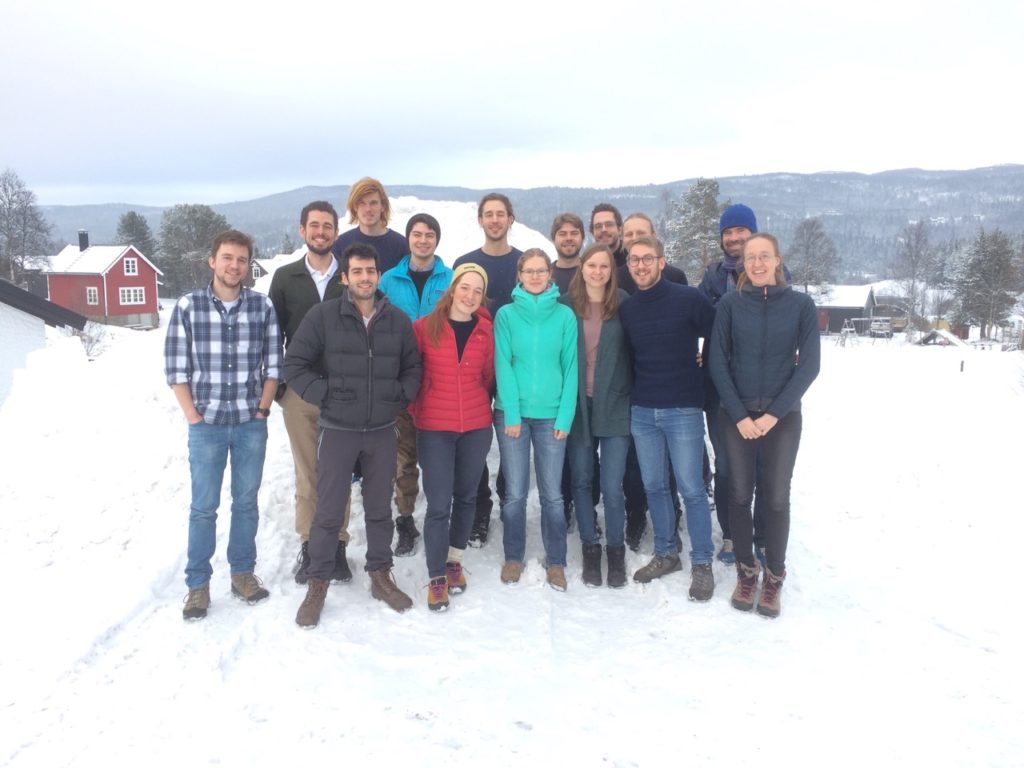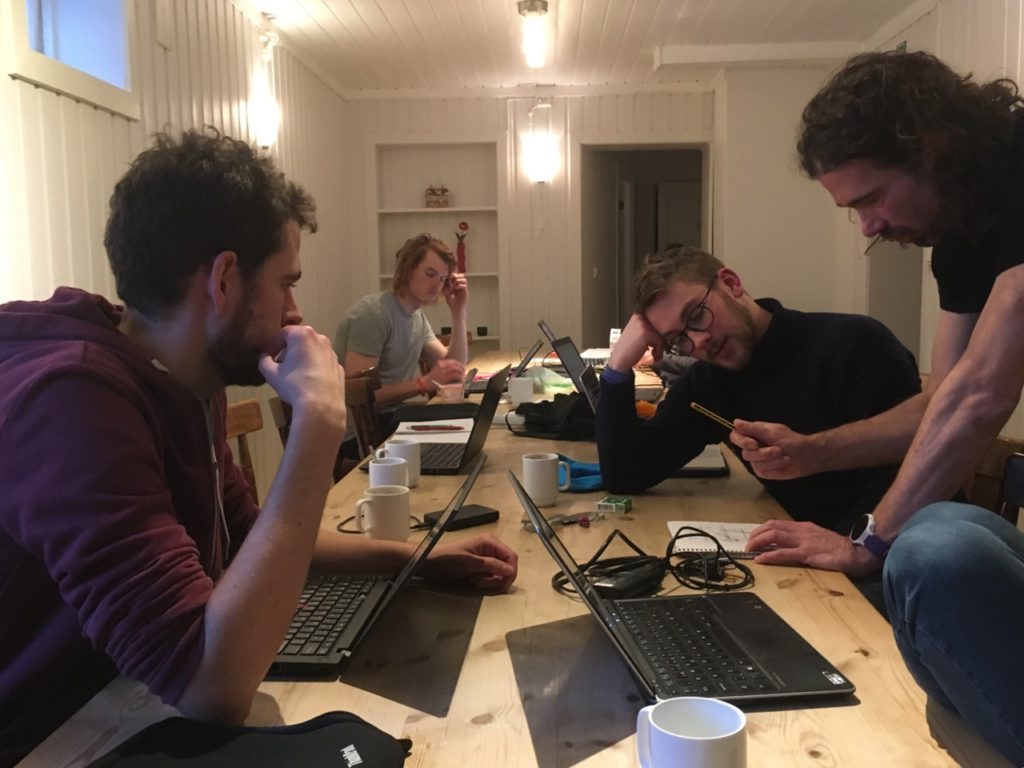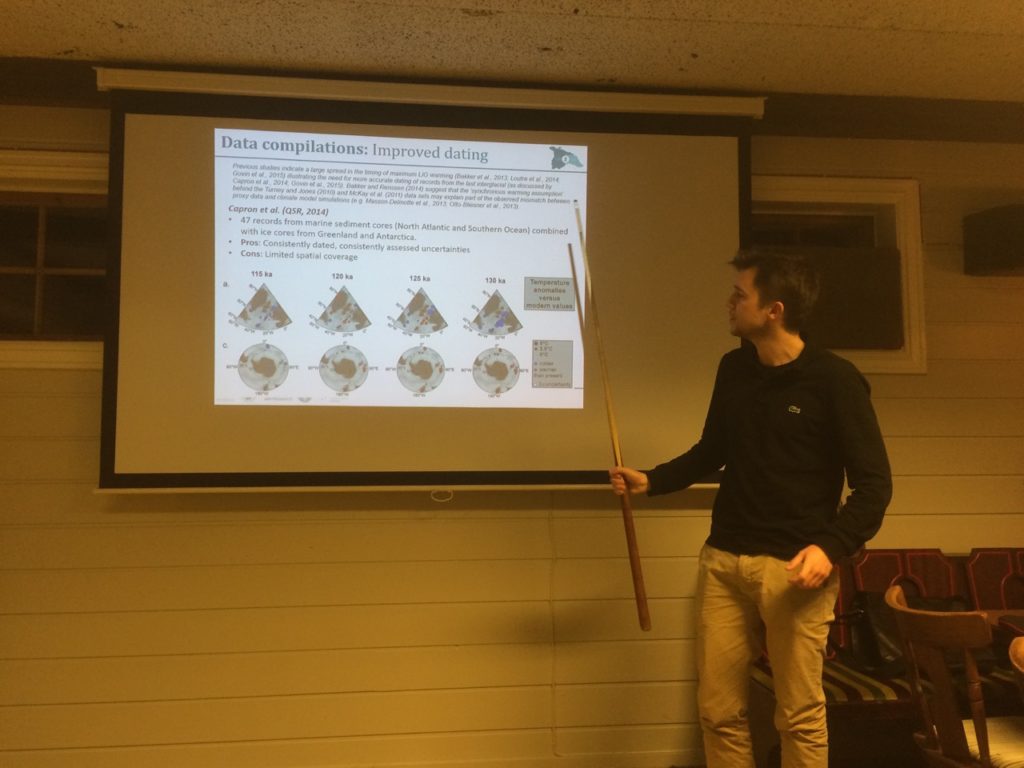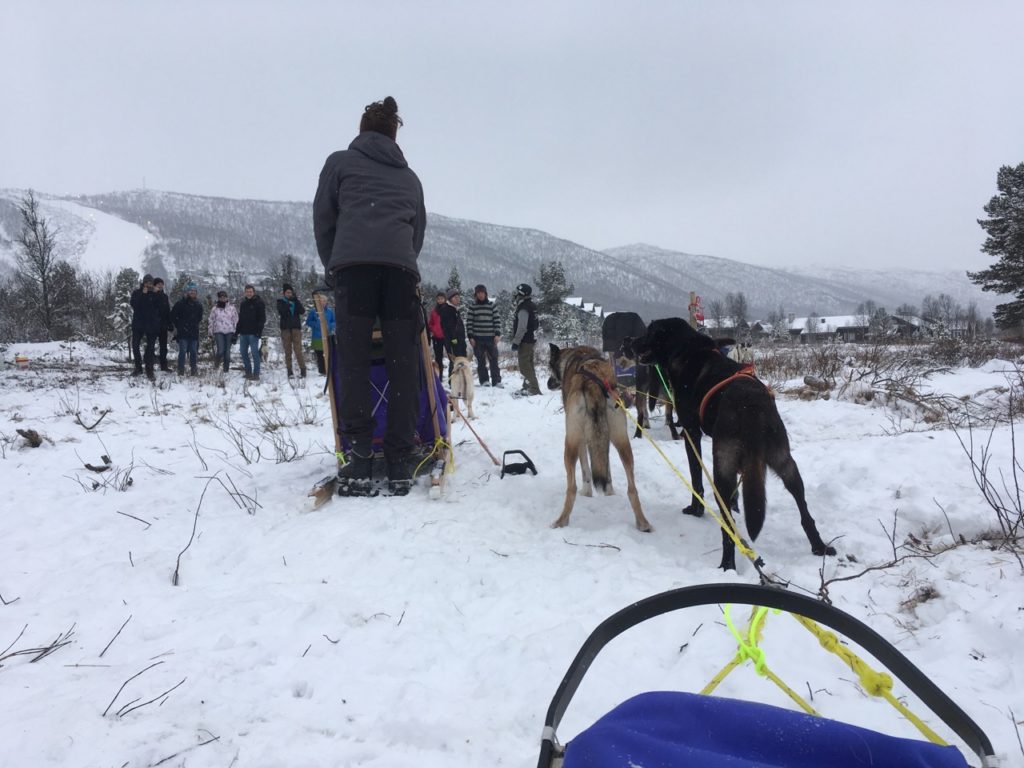
The second edition of the Ice2Ice PhD bootcamp recently came to an end, this time held in Geilo in the midst of the Norwegian winter, a couple of hundred kilometers to the east of Bergen. Based on the idea that each PhD student should benefit, in term of hers/his own project, from collaborating with other students working on related problems, the fourteen participating PhD students were divided into three groups several months prior to bootcamp. Within each group, a project was defined and sufficient preparations were made on beforehand such that the bootcamp week provided the ideal surroundings and time to work intensively on the project, and to answer the related scientific questions.

One group worked on the momentum balance of the Northeast Greenland Ice Stream (NEGIS) outlet glaciers and had a specific emphasize on the potential back-resistance provided by the glacier tongue. Another group investigated the possibility to establish a self-sustained extensive sea ice cover in the North Atlantic in a coupled general circulation model by assimilating sea ice in an energetically consistent way. The last group focused on comparisons of proxy records obtained from sediment- and ice cores, specifically sea ice reconstructions based on Bromine enrichment as seen from the Greenland ice sheet and concentrations in sediments of organic matter from diatoms that live below the sea ice edge. Each group were guided by a mentor of their own choice, who were either available through a web connection throughout the week or were present at the bootcamp itself.

Besides the group work, the bootcamp also hosted scientific talks by mentors Rasmus Anker Pedersen (PostDoc, Centre for Ice and Climate) and Lars Henrik Smedsrud (Professor, University of Bergen) as well as student-organized seminars on plotting possibilities with python and GMT, and proxy interpretations and uncertainties. The week culminated with a presentation by each group on the results obtained during the bootcamp and on the possible prospects.

Despite the military discipline which is associated with a bootcamp, the week did allow for a few cultural and social inputs. The owner of the bootcamp venue gave a brief introduction to the Hardanger fiddle, a delicate Norwegian instrument, and during Thursday a couple of hours of break were taken away from science as the groups went for a 5km dog sledge ride in the outskirt of Geilo.
The results from the three groups, as well as the perspectives and the possibilities to integrate the projects further into the Ice2Ice synergy, will be presented on the all-staff meeting in Myrkdalen in March.